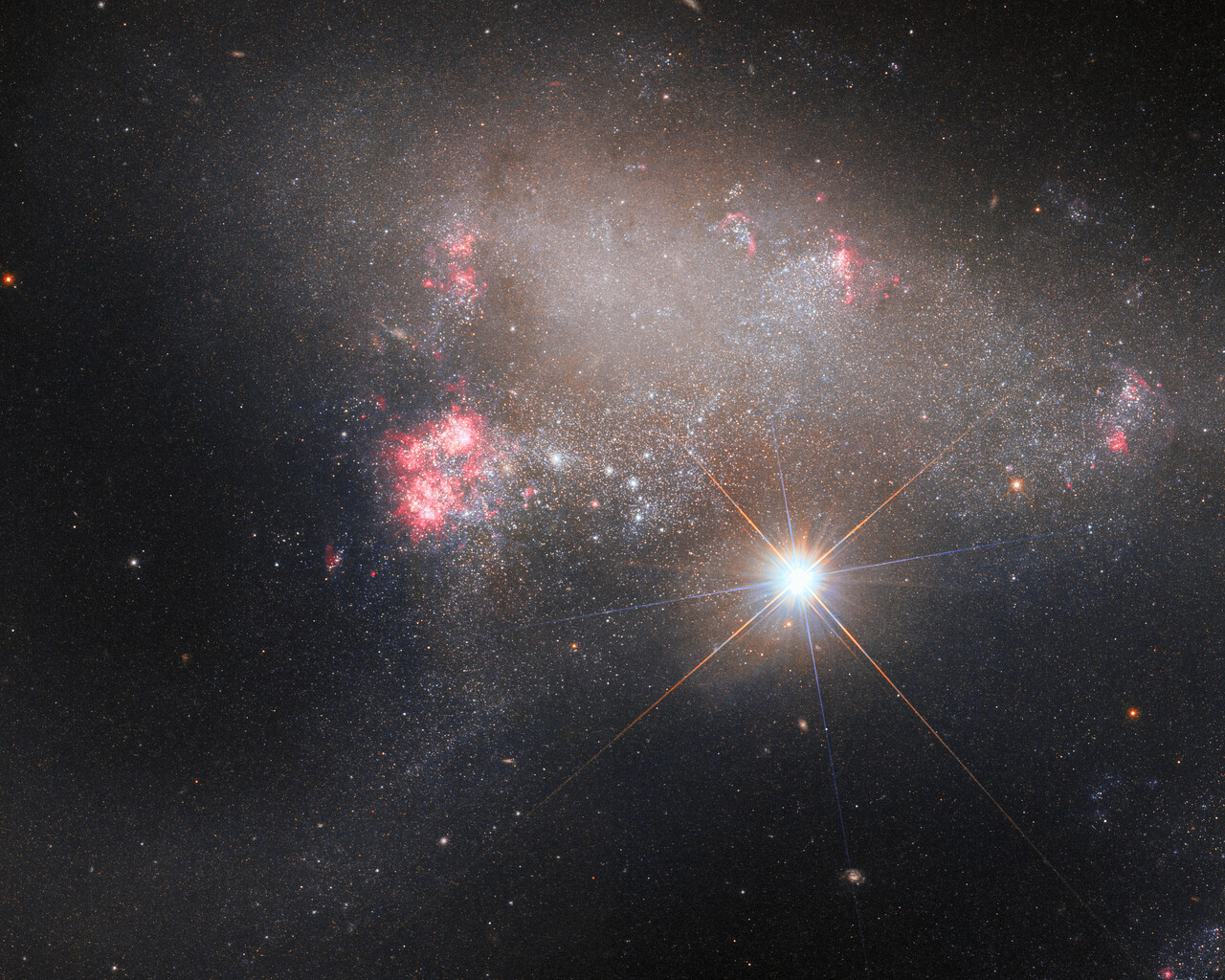Hubble snaps stellar photobomber, around 25 million light-years away

The Universe offers a never-ending source of wonder and inspiration. One such marvel is Arp 263, an irregular galaxy that forms the background of this latest image (a triangle-shaped patch of tiny stars) from the NASA/ESA Hubble Space Telescope. However, the spotlight is stolen by a stellar photobomber, the bright star BD+17 2217.
Located approximately 25 million light-years away in the constellation Leo, Arp 263, also known as NGC 3239, is studded with regions of recent star formation and the galaxy's ragged appearance is believed to be due to its having formed from the merger of two galaxies.
This image of Arp 263 combines data from two separate Hubble observations utilizing two of its advanced third-generation instruments. The first investigation focused on studying the sites of recent supernovae - the explosive deaths of massive stars. Using Hubble's powerful Wide Field Camera 3, astronomers searched for remnants of massive stellar explosions, such as the supernova SN 2012A, which occurred over a decade ago within the galaxy.
The second investigation focused on imaging peculiar galaxies listed in the Arp catalogue, including Arp 263, using Hubble's Advanced Camera for Surveys. The campaign aimed to identify promising subjects for detailed examination using the powerful James Webb Space Telescope.
📷 The NASA/ESA @HUBBLE_space telescope has captured a stellar photobomber!💥 The irregular galaxy Arp 263 lurks in the background while the view is dominated by the bright star BD+17 2217. The galaxy is believed to have formed from two larger galaxies merging and is studded… pic.twitter.com/IQo585H6dg
— ESA (@esa) July 17, 2023
Launched in 1990, Hubble continues to provide astronomers with breathtaking images and invaluable scientific data, transforming our knowledge of the enigmatic universe. The James Webb Space Telescope complements Hubble, pushing the boundaries even further for space exploration.










